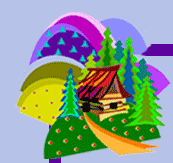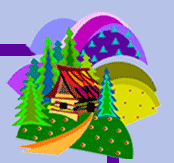Ftan is a municipality in the district of Inn in the Swiss canton of Graubnden.
History
Ftan is first mentioned in 1150 as Vetane.
Geography
Ftan has an area, as of 2006, of 43.1 km2 (16.6 sq mi). Of this area, 40.6% is used for agricultural purposes, while 15.4% is forested. Of the rest of the land, 1.2% is settled (buildings or roads) and the remainder (42.8%) is non-productive (rivers, glaciers or mountains).
The municipality is located in the Suot Tasna sub-district of the Inn district on a terrace above the left bank of the Inn river. It consists of the village sections of Ftan Grond and Ftan Pitschen. Until 1943 Ftan was known as Fetan.
Demographics
Ftan has a population (as of 31 December 2011) of 526. As of 2008, 11.2% of the population was made up of foreign nationals. Over the last 10 years the population has grown at a rate of 9.6%.
As of 2000, the gender distribution of the population was 49.2% male and 50.8% female. The age distribution, as of 2000, in Ftan is; 57 children or 11.0% of the population are between 0 to 9 years old. 40 teenagers or 7.8% are 10 to 14, and 84 teenagers or 16.3% are 15 to 19. Of the adult population, 39 people or 7.6% of the population are between 20 to 29 years old. 65 people or 12.6% are 30 to 39, 69 people or 13.4% are 40 to 49, and 53 people or 10.3% are 50 to 59. The senior population distribution is 43 people or 8.3% of the population are between 60 to 69 years old, 48 people or 9.3% are 70 to 79, there are 15 people or 2.9% who are 80 to 89, and there are 3 people or 0.6% who are 90 to 99.
In the 2007 federal election the most popular party was the SVP which received 43% of the vote. The next three most popular parties were the SPS (42.1%), the FDP (7.7%) and the CVP (5.1%).
The entire Swiss population is generally well educated. In Ftan about 81.8% of the population (between age 25-64) have completed either non-mandatory upper secondary education or additional higher education (either university or a Fachhochschule).
Ftan has an unemployment rate of 0.81%. As of 2005, there were 64 people employed in the primary economic sector and about 24 businesses involved in this sector. 16 people are employed in the secondary sector and there are 6 businesses in this sector. 180 people are employed in the tertiary sector, with 25 businesses in this sector.
The Alps are one of the great mountain range systems of Europe stretching approximately 1,200 kilometres (750 mi) across eight Alpine countries from Austria and Slovenia in the east, Switzerland, Liechtenstein, Germany, France to the west and Italy and Monaco to the south. The mountains were formed over hundreds of millions of years as the African and Eurasian tectonic plates collided. Extreme shortening caused by the event resulted in marine sedimentary rocks rising by thrusting and folding into high mountain peaks such as Mont Blanc and the Matterhorn. Mont Blanc spans the French-Italian border, and at 4,810.45 m (15,782 ft) is the highest mountain in the Alps. The Alpine region area contains many peaks higher than 4,000 m (13,123 ft), known as the "four-thousanders".
The altitude and size of the range affects the climate in Europe; in the mountains precipitation levels vary greatly and climatic conditions consist of distinct zones. Wildlife such as ibex live in the higher peaks to elevations of 3,400 m (11,155 ft), and plants such as Edelweiss grow in rocky areas in lower elevations as well as in higher elevations. Evidence of human habitation in the Alps goes back to the Paleolithic era. A mummified man, determined to be 5,000 years old, was discovered on a glacier at the Austrian-Italian border in 1991. By the 6th century BC, the Celtic La Tne culture was well established. Hannibal may have crossed the Alps with a herd of elephants, and the Romans had settlements in the region. In 1800 Napoleon crossed one of the mountain passes with an army of 40,000. The 18th and 19th centuries saw an influx of naturalists, writers, and artists, in particular the Romantics, followed by the golden age of alpinism as mountaineers began to ascend the peaks. In World War II the Third Reich invaded the Alpine countries, with the exception of Switzerland and Liechtenstein; Adolf Hitler kept a base of operation in the Bavarian Alps throughout the war.
The Alpine region has a strong cultural identity. The traditional culture of farming, cheesemaking, and woodworking still exists in Alpine villages, although the tourist industry began to grow early in the 20th century and expanded greatly after World War II to become the dominant industry by the end of the century. The Winter Olympic Games have been hosted in the Swiss, French, Italian, Austrian and German Alps. At present the region is home to 14 million people and has 120 million annual visitors.

